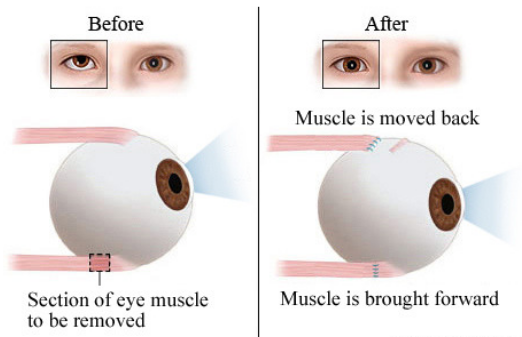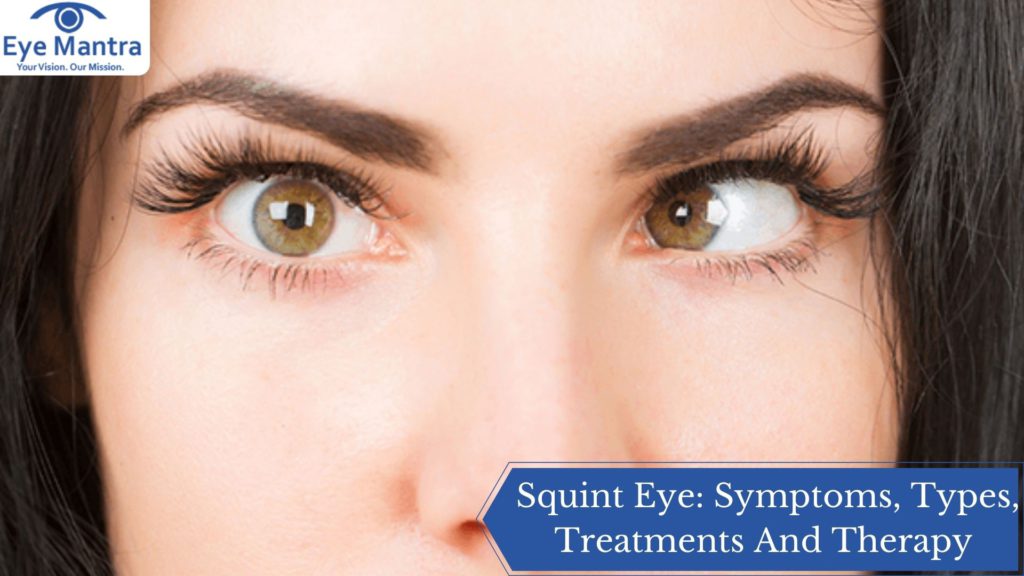Contents
What Is Squint Eye?
Squint eye treatment is performed with or without any complicated surgery, that helps the patient to recover from strabismus.
Squint eyes are often called crossed eyes. It is a condition in which eyes do not have similar alignment and can lead to various sight problems such as blurred vision or double vision. This condition is also called strabismus. It can also be referred to as a state in which the resultant eyes cannot focus on the same object at the same position which increases the stress on one eye than the other, which in turn leads to sight problems as well amblyopia condition. It can occur suddenly or can also be genetically transferred from parents to children and also be present since childhood or during infant state only.
There are various causes for strabismus such as muscle dysfunction or farsightedness or due to some trauma or cerebral-related problems as well as due to some injuries and some are hereditary. Paralysis of 3 cranial nerves namely III, IV &VI, which are useful in eye activity can result in strabismus conditions of the eye. Major causes of this problem are unrecognized eye activity and indirect palsy or third sensor palsy.
Symptoms of Squint Eyes
- Blurred vision
- Lack of coordination between eyes.
- Misaligned eyes
- Improper eye activity
Now, problems faced due to strabismus are blurred vision and visual impairment (in rare cases). Not only that, strabismus creates an impact on a child’s confidence levels by decreasing their self-esteem. Usually, young children are mostly affected with squint eyes and few adult populations too.
Types of Squint Eye
By The Direction of The Squinting Eye (i.e. the eye not looking perfect in the direction of gaze)
- An eye that turns inwards is called esotropia.
- An eye that turns outwards is called an exotropia.
- An eye that turns upwards is called hypertropia.
- An eye that turns downwards is called a hypotropia.
By How Constantly The Squint Is Present
- A squint that is present all the time is called a constant squint.
- A squint that comes and goes is called an intermittent squint.
By When The Squint Is Seen
- If it happens when the eyes are open, it is called a manifest squint.
- If it happens only when the eye is covered or shut, it is called a latent squint.
By Whether The Severity of The Squint Is The Same In All Directions or Not
- A concomitant squint means that the angle (degree) of the squint is always the same in every direction that you look. That is, the two eyes move well, all the muscles are working but the two eyes are always out of alignment by the same amount, no matter which way you look.
- An incomitant squint means that the angle of the squint can vary. For example, when you look to the left, there may be no squint and the eyes are aligned. However, when you look to the right, one eye may not move as far and the eyes are then not aligned.
By Onset of Age
- Most squints develop at some time in the first three years of life. Some develop in older children and in adults.
- Squints that develop in children usually have different causes, in comparison to squints which develop in adults.
By The Cause
- In many cases of childhood squint, the reason why a squint develops is not known.
- In some cases of childhood squint (and most cases of an adult squint), the squint occurs because of a disorder of the eye, the eye muscles, the brain, or the nerves.
- Another kind of squint also known as pseudo squint in which the eyes appear to be misaligned but are truly not, it is caused by a wide gap present between 2 eyes due to nose bridge.
Diagnosis of Squint Eyes
There are various tests that are needed to be performed such as testing for the amount and type of squint, present inside the eye and refraction rate of the eye of the patient. Understanding the fixation point of the patient is a must for analyzing the effect of squint and determining the type of treatment required for the patient to recover as quickly as possible.
Treatment of Squint Eyes

It is a myth that crossed eyes can’t be treated. Due to enormous efforts made by various scientists and doctors, squint eyes can be treated without much pain and it is cost-effective and can be treated at any age.
- Squint eyes can be treated by various means such as the usage of spectacles or therapy and by surgery (in rare cases). In the case of esotropia i.e, the eyes turn inward and correction in refractive nature is required, so a pair of glasses or contact lenses will do the job.
- In other cases, contact lenses are more preferred because they help decrease the gap, between the arrangement of the eyes. The presence of improper treatment or any kind of residual squint can also affect the child’s vision, as it can lead to amblyopia i.e, a condition in which one eye loses its activity despite having normal conditions. This is a serious side effect causing visual impairment of the patient, not only that amblyopia can be treated by performing a surgery in which the surgeon tries to align the eyes by either decreasing the size or increasing the size or changing the position of the eye muscles due to which the patient can see clearly even without the help of spectacles.
- Squint eye can occur in people from their childhood time. There is a particular medicinal therapy that can help in the treatment of squint eyes in children whose age is below 12 years. It is botulinum toxic therapy in which the drug is injected into the strong muscle present in the eye causing it to be temporarily paralyzed. This medication is done every 3-4 months based on which the squint eyes are aligned. No drug is present without adverse effects so, even this therapy has its own side effects which are drooping eyelids, double vision, or blurred vision. Usage of prism lenses can help in correcting the vision by decreasing the blurred vision effects and these glasses provide temporary relaxation to the eyes. Usage of atropine drugs or Botox injections is another method used for treating strabismus. Vision therapy can help in the transformation of eyes, brain, and body structure which improves vision and one’s appearance.
Vision Therapy For Squint Eyes
It is the most effective way of treating squint eyes without surgery. It consists of eye exercises as well as the usage of lenses and glasses and other therapeutic methods for treating strabismus. This therapy not only helps in treating squint but also helps in treating nerves that are attached to eye muscles which help in its functioning. It also provides good cosmetic results and improvements in a patient’s condition.
This vision therapy is a commonly used therapy for both strabismus treatment. It is also used for treating amblyopia (also known as lazy eye). Though the treatment for amblyopia and strabismus is similar they should not be considered as same because they are completely different conditions.
As some of the strabismus conditions (such as esotropia or exotropia i.e., wall-eyed) can cause amblyopia, but they differ in their binocular vision impairment. Amblyopia causes more vision damage to the patients than squint eyes. People suffering from amblyopia cannot perform a visual eye turn.
The best way to treat your eyes is to visit your eye care professional and get your eyes checked regularly. He will be able to assess the best method of treatment for your eye ailment.
Visit our website Eyemantra.
To book an appointment call at +91-9711115191. Or mail us at [email protected].
Our other services include Retina Surgery, Specs Removal, Cataract Surgery, and many more.



